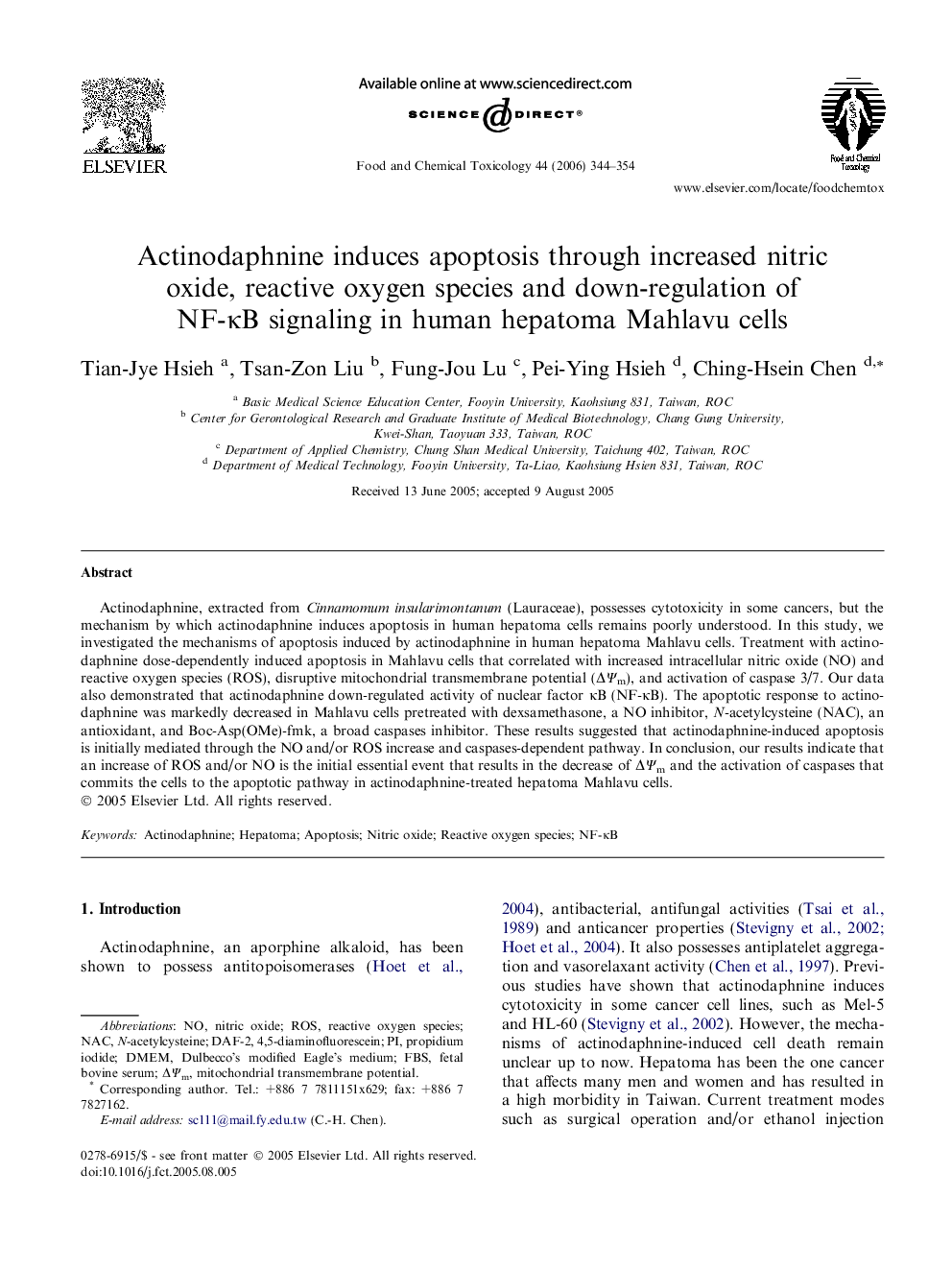| Article ID | Journal | Published Year | Pages | File Type |
|---|---|---|---|---|
| 2587268 | Food and Chemical Toxicology | 2006 | 11 Pages |
Actinodaphnine, extracted from Cinnamomum insularimontanum (Lauraceae), possesses cytotoxicity in some cancers, but the mechanism by which actinodaphnine induces apoptosis in human hepatoma cells remains poorly understood. In this study, we investigated the mechanisms of apoptosis induced by actinodaphnine in human hepatoma Mahlavu cells. Treatment with actinodaphnine dose-dependently induced apoptosis in Mahlavu cells that correlated with increased intracellular nitric oxide (NO) and reactive oxygen species (ROS), disruptive mitochondrial transmembrane potential (ΔΨm), and activation of caspase 3/7. Our data also demonstrated that actinodaphnine down-regulated activity of nuclear factor κB (NF-κB). The apoptotic response to actinodaphnine was markedly decreased in Mahlavu cells pretreated with dexsamethasone, a NO inhibitor, N-acetylcysteine (NAC), an antioxidant, and Boc-Asp(OMe)-fmk, a broad caspases inhibitor. These results suggested that actinodaphnine-induced apoptosis is initially mediated through the NO and/or ROS increase and caspases-dependent pathway. In conclusion, our results indicate that an increase of ROS and/or NO is the initial essential event that results in the decrease of ΔΨm and the activation of caspases that commits the cells to the apoptotic pathway in actinodaphnine-treated hepatoma Mahlavu cells.
